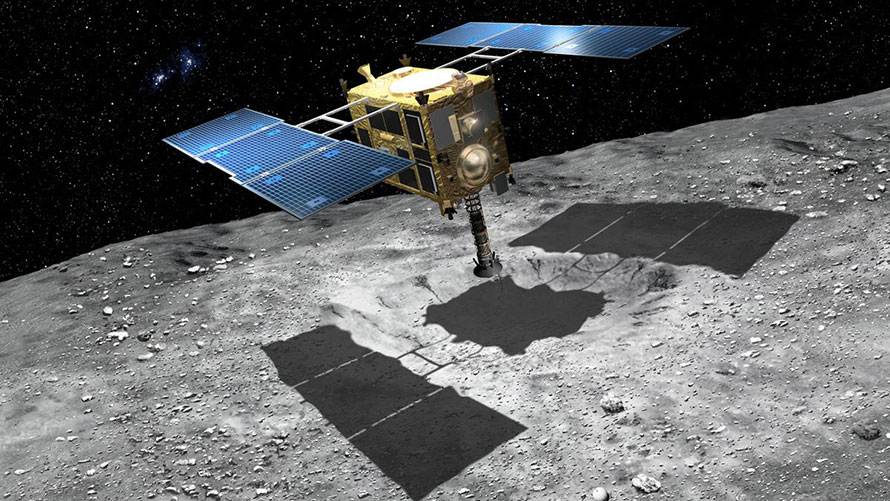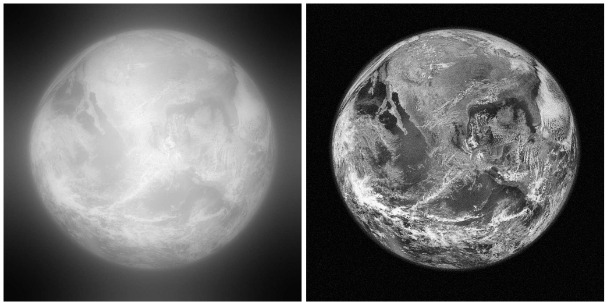
As part of their Themis Program, the ESA is developing reusable rocket technology.
Continue reading

Continue reading

Continue reading

A team of astronomers set out to disprove modified gravity, and ended up confirming it instead.
Continue reading

Continue reading

According to statements made by JAXA, the samples returned by the Hayabusa 2 mission included black sand and gases obtained from the asteroid itself.
Continue reading

Continue reading

Could it be that the reason we haven't met any aliens is because interstellar colonization simply isn't practical? Not exactly good news for us!
Continue reading

Continue reading

Eclipses, meteor showers, occultations and more.
Continue reading

Continue reading

Continue reading

Continue reading

NASA and the Canadian Space Agency have announced that a Canadian astronaut will fly as part of the Artemis II mission.
Continue reading

Astronomers look for dark matter in the radio signals of neutron stars. If found it could solve two problems in fundamental physics.
Continue reading

NASA has announced the names of the 18 astronauts that make up the Artemis Team. A select few, and some international partners, will be going back to the Moon!
Continue reading

Continue reading

Continue reading

Is it possible that we haven't heard from aliens because colonizing exoplanets is hazardous to your health? So says the Aurora Hypothesis!
Continue reading

Continue reading

Continue reading

NASA has released the Artemis III Science Definition Team Report, which defines the science operations that the "first woman and next man" will conduct on the Moon in 2024.
Continue reading

Images taken by the Lunar Reconnaissance Orbiter (LRO) show where the Chang'e-5 mission landed. The samples obtained by this lander were recently returned to Earth.
Continue reading

Continue reading

Continue reading

Visual artist Kevin M. Gill's latest creation is an image of what Hypanis valles (an ancient river channel) on Mars would have looked like with water flowing through it.
Continue reading

Scientists have made a clock so accurate you wouldn't have to reset it for billions of years.
Continue reading

On Dec. 7th, 2020, legendary aviator Chuck Yeager died in hospital at the age of 97. He leaves behind a wife, three children, and a mountain of accomplishments!
Continue reading

Continue reading
Continue reading

Continue reading

Underneath all the gravitational waves we see are faint primordial waves. If we can detect them, it could change our understanding of the cosmos.
Continue reading

Continue reading

Continue reading

Continue reading

Continue reading

The latest addition to the NewSpace industry is the Aevum RAVN-X, an automonous aircraft that can air-launch satellites to Low Earth Orbit (LEO)
Continue reading

Continue reading

Continue reading

The solar system's two massive gas giant planets pair up at dusk on December 21st, with a rare conjunction of Jupiter and Saturn.
Continue reading

A recent study shows how the Sun could be used as a gravitational lens to take direct images of nearby exoplanets - like Proxima b!
Continue reading

Continue reading

If quark matter stars exist, they could look like white dwarfs that are unusually small.
Continue reading

Continue reading

Got clear skies? Then bundle up: the Geminid meteors—one of the best, sure-fire annual meteor showers—peaks this weekend… and near a New Moon, to boot.
Continue reading

Fast spinning black holes could have features different from those predicted by general relativity.
Continue reading

Follow-up observations by NASA scientists has confirmed that the mystery object 2020 SO is indeed a relic of the early Space Age.
Continue reading
Continue reading

SpaceX launched the SN8 Starship prototype early today and while it failed to stick the landing, the flight was an overall success!
Continue reading

A new study suggests that planets smaller than Earth form much later than large planets, which could point to a rare Earth.
Continue reading
















































